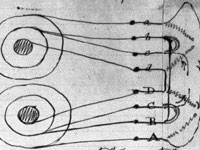Fort Laramie National Historic Site [WY]
The Fort Laramie National Historic Site commemorates Fort Laramie. Originally constructed in 1841 as a privately owned fur trade fort, the settlement was known as Fort John. It acquired its new name in 1849, after the U.S. Army purchased the outpost in order to protect travelers on the Oregon Trail from the local Native American populations. The United States and the Plains Indians honored the Treaty of 1851, which demanded peace from both parties, for only three years. During the 1860s, fort soldiers were primarily concerned with maintaining nearby telegraph wires. Collections include 19th-century frontier artifacts.
The fort offers an 18-minute introductory film, exhibits, Junior Ranger activities, and an audio tour for rental. The audio tour includes narration, readings from primary source documents, and soundscapes. The website offers a virtual tour.
